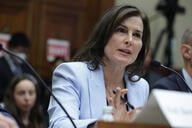You have /5 articles left.
Sign up for a free account or log in.
The U.S. Department of Education has a response to colleges and universities confused by how they are supposed to count students enrolled in distance education courses: Read the instructions.
In a study released last month, higher education consultant Phil Hill and the WICHE Cooperative for Educational Technologies found many colleges and universities have under- or overreported thousands of students to the federal government, which tracks those numbers through the Integrated Postsecondary Education Data System program, or IPEDS.
Hill and Poulin, deputy director of research and analysis for WCET, identified two main reasons behind the irregularities. In some cases, institutions were confused about whether or not to report students enrolled in continuing education, and in others, institutions used their own definitions of distance education.
Poulin on Friday posted a summary of a conversation with department officials, who urged colleges and universities to read the IPEDS instructions closely to avoid reporting incorrect figures. The federal government defines distance education as a course in which content is delivered “exclusively” online -- a much higher percentage than what some regional accreditors call for.
“While they understand that states may have differing reporting requirements, they were very clear that they expect colleges to use this nearly 100-percent definition in reporting distance education enrollments,” Poulin wrote.
Although the department did not seem to think the incorrectly reported numbers were “significant,” Poulin encouraged an open debate about the federal government's definition of distance education.
“On the plus side, it is a clear definition,” Poulin wrote. “On the negative side, the ‘nearly 100 percent’ definition does not reflect current practice. But, that’s a question for a different day. And it is a discussion that may need to include accreditors and states.”




